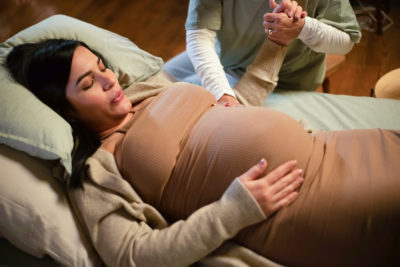 I attend a mission-oriented church that provided the opportunity to become trained and certified as a volunteer doula. I jumped at the opportunity. Doulas do not help deliver babies like doctors or midwives do, but they assist mothers in the labor process. Doulas provide moms prenatal education, comfort and direction during delivery, and assistance with breastfeeding, such as latching on. This is a service previously only available to those in the wealth class, as insurance does not cover the care. I had the chance to provide this service to women in poverty.
I attend a mission-oriented church that provided the opportunity to become trained and certified as a volunteer doula. I jumped at the opportunity. Doulas do not help deliver babies like doctors or midwives do, but they assist mothers in the labor process. Doulas provide moms prenatal education, comfort and direction during delivery, and assistance with breastfeeding, such as latching on. This is a service previously only available to those in the wealth class, as insurance does not cover the care. I had the chance to provide this service to women in poverty.
She was in her young twenties and had four children at home, two of whom were sleeping on the floor for lack of beds. They were somewhere below the poverty level despite their mother working hard with full-time employment as a nurses’ aid. I met her in prenatal education classes taught weekly throughout her third trimester. I was assigned to her because our personalities aligned. When she went into labor, her mother came from out of town to keep the other children, but that left her to labor alone in the delivery room. Her mother was all she had in terms of social resources.
There is a process in labor and delivery that has become common. Mommies reach the second stage of labor, and contractions become more intense. They are then offered an epidural. Do not get me wrong—I birthed three boys, two with epidurals and one without any pain medication. My best friend growing up became a mother before me and said that epidurals are straight from God, and I can’t disagree. Epidurals are great, but timing is everything.
The process is that, in the second stage of labor, if mom fails to progress, she is given Pitocin to fuel contractions, followed by an epidural administered to relieve her from pain because those contractions are more intense. However, this means that she will be restricted to bed during her labor and delivery. Evolution and Mother Nature are asking her to walk and squat. This all adds up to an increased chance of needing to undergo a C-section that could be avoided if the epidural were postponed a bit to allow mom to labor vertically rather than be restricted to the bed. Naturally, the process of labor can take some time, but most insurance companies cover about 48 hours in the hospital for an uncomplicated, vaginal delivery, including recovery. This time is extended if caesarian section becomes necessary.
The impacts of caesarian section are lifesaving to babies in distress but do not fall on social classes equally. Mothers in poverty who go home to four children without help but with a stomach full of staples and extended recovery time struggle. My assigned friend had a C-section in part because Covid rules restricted the delivery room from advocates and birth coaches. She went home to four children under the age of 12, plus a newborn. Her mother had to leave to return to work within 24 hours. She had no “bring baby home from the hospital” outfit, she had no diapers, and she had no groceries. This year, that baby will enter kindergarten from a very rough start.
In any race, it is important how you leave the starting line. As classrooms fill, compassion and understanding are necessary for educators to understand that some of these children did not have an easy birth or come home to a beautiful nursery prepared to nurture them. Some babies come home to sleep on the floor when they graduate from mom’s bed.








